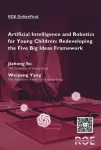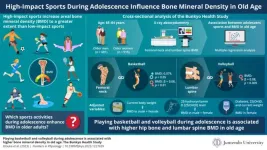(Press-News.org) Could a Drug Prevent Hearing Loss from Loud Music and Aging?
Researchers have found a gene that links deafness to cell death in the inner ear in humans – creating new opportunities for averting hearing loss.
A person’s hearing can be damaged by loud noise, aging and even certain medications, with little recourse beyond a hearing aid or cochlear implant.
But now, UCSF scientists have achieved a breakthrough in understanding what is happening in the inner ear during hearing loss, laying the groundwork for preventing deafness.
The research, published on Dec. 22, 2023, in the Journal of Clinical Investigation Insight, links animal studies on hearing loss with a rare type of inherited deafness in humans. In both cases, mutations to the TMTC4 gene trigger a molecular domino effect known as the unfolded protein response (UPR), leading to the death of hair cells in the inner ear.
Intriguingly, hearing loss from loud noise exposure or drugs such as cisplatin, a common form of chemotherapy, also stems from activation of the UPR in hair cells, suggesting that the UPR may underly several different forms of deafness.
There are several drugs that block the UPR – and stop hearing loss – in laboratory animals. The new findings make a stronger case for testing these drugs in people who are at risk of losing their hearing, according to the researchers.
“Millions of American adults lose their hearing due to noise exposure or aging each year, but it’s been a mystery what was going wrong,” said Dylan Chan, MD, PhD, co-senior author on the paper and director of the Children’s Communication Center (CCC) in the UCSF Department of Otolaryngology. “We now have solid evidence that TMTC4 is a human deafness gene and that the UPR is a genuine target for preventing deafness.”
How hair cells in the ear self-destruct
In 2014, Elliott Sherr, MD, PhD, director of the UCSF Brain Development Research Program and co-senior author of the paper, noticed that several of his young patients with brain malformations all had mutations to TMTC4. But laboratory studies of this gene soon presented a conundrum.
“We expected mice with TMTC4 mutations to have severe brain defects early on, like those pediatric patients, yet to our surprise, they seemed normal at first,” Sherr said. “But as those animals grew, we saw that they didn’t startle in response to loud noise. They had gone deaf after they had matured.”
Sherr partnered with Chan, an expert on the inner ear, to look into what was happening to the mice, which looked like an accelerated version of age-related hearing loss in humans. They showed that mutations to TMTC4 primed hair cells in the ear to self-destruct, and loud noise did the same thing. In both cases, hair cells were flooded with excess calcium, throwing off the balance of other cellular signals, including the UPR.
But they found there was a way to stop this. ISRIB, a drug developed at UCSF to block the UPR’s self-destruct mechanism in traumatic brain injury, prevented animals who were exposed to noise from going deaf.
The first adult human deafness gene
In 2020, scientists from South Korea, led by Bong Jik Kim, MD, PhD, connected Chan and Sherr’s 2018 findings with genetic mutations they found in two siblings who were losing their hearing in their mid-20s. The mutations were in TMTC4 and matched what Chan and Sherr had seen in animals, although they were distinct from those in Sherr’s pediatric neurology patients.
“It’s rare to so quickly connect mouse studies with humans,” Sherr said. “Thanks to our Korean collaborators, we could more easily prove the relevance of our work for the many people who go deaf over time.”
Kim, an otolaryngologist at the Chungnam National University College of Medicine (Korea), facilitated the shipping of cells from those patients to UCSF. Sherr and Chan tested those cells for UPR activity and found that, indeed, this flavor of TMTC4 mutation turned on the destructive UPR pathway in a human context.
When Chan and Sherr mutated TMTC4 only in hair cells in mice, the mice went deaf. When they mutated TMTC4 in cells from individuals in the Korean family who hadn’t gone deaf, and in laboratory human cell lines, the UPR drove the cells to self-destruct. TMTC4 was more than a deafness gene in mice – it was a deafness gene in humans, too.
Translating a discovery to prevent deafness
Understanding TMTC4 mutations gives researchers a new way of studying progressive deafness, since it is critical for maintaining the health of the adult inner ear. The mutations mimic damage from noise, aging or drugs like cisplatin.
The researchers envision a future where people who must take cisplatin, or who have to be exposed to loud noises for their jobs, take a drug that dampens the UPR and keeps hair cells from withering away, preserving their hearing.
The science also suggests that the UPR could be targeted in other contexts where nerve cells become overwhelmed and die, including diseases long thought to be incurable, like Alzheimer’s or Lou Gehrig’s disease.
“If there's any way that we can get in the way of the hair cells dying, that's how we're going to be able to prevent hearing loss,” Chan said.
About UCSF: The University of California, San Francisco (UCSF) is exclusively focused on the health sciences and is dedicated to promoting health worldwide through advanced biomedical research, graduate-level education in the life sciences and health professions, and excellence in patient care. UCSF Health, which serves as UCSF's primary academic medical center, includes top-ranked specialty hospitals and other clinical programs, and has affiliations throughout the Bay Area. UCSF School of Medicine also has a regional campus in Fresno. Learn more at https://ucsf.edu, or see our Fact Sheet.
###
Follow UCSF
ucsf.edu | Facebook.com/ucsf | YouTube.com/ucsf
END
Could a drug prevent hearing loss from loud music and aging?
2024-01-08
ELSE PRESS RELEASES FROM THIS DATE:
Henry Ford Health recognized for outstanding consumer experience with two prestigious Press Ganey awards
2024-01-08
DETROIT (Jan. 8, 2024) – Henry Ford Health has earned two distinguished recognitions, the HX Pinnacle of Excellence Award® and HX Guardian of Excellence Award®, both in the category of Consumer Experience and granted by Press Ganey, a leading organization focused on patient experience measurement and healthcare performance improvement. These awards reflect Henry Ford Health's unwavering commitment to providing an exceptional care experience for each of its patients and their families.
"We are immensely proud to receive the Pinnacle of Excellence and Guardian of Excellence Awards from Press Ganey,” said Bob Riney, President and ...
A novel strategy for extracting white mycelial pulp from fruiting mushroom bodies
2024-01-08
Mycelial fibers, the fibrous cells found in fruiting mushroom bodies, have gained momentum as a sustainable material for making leather and packaging owing to their excellent formability. Recently, a team of researchers from Shinshu University, Japan, has found a simple way of obtaining mycelial fibers, called “mycelial pulp,” from fruiting mushroom bodies and bleaching them using sunlight while keeping their mycelial structures intact.
Every year, humans generate millions of tons of waste, and almost 38% of that waste ends up in a landfill. A significant portion of it is made up of plastic or petroleum-based ...
For black adolescents, feeling connected to school has long-lasting mental health benefits
2024-01-08
School connectedness – the degree to which students feel part of their school community – influences more than grades. For Black students, it’s a protective factor against depression and aggressive behavior later in life, according to a Rutgers University-New Brunswick study.
“Our data provide fairly strong evidence for the idea that the experiences Black adolescents have in their school impacts their long-term mental health,” said Adrian Gale, an assistant professor in the Rutgers School ...
Mechanisms and management of atrial fibrillation: Updates from a Chinese Medical Journal Review
2024-01-08
Atrial fibrillation (AF) is a major global health concern impacting millions and causing symptoms like palpitations, dyspnea, fatigue, dizziness, and chest discomfort. Furthermore, these symptoms reduce patients’ quality of life and lead to increased mortality and morbidity. The medical community agrees that epicardial adipose tissue (EAT), chronic inflammation, imbalances in the autonomic nervous system (ANS), stretch-induced fibrosis, and genetic alterations are the main factors that influence AF pathogenesis. Despite extensive research efforts focused on uncovering the underlying mechanisms ...
Study from ECNU Review of Education redevelops framework for teaching artificial intelligence and robotics
2024-01-08
Just like computers, the Internet, and smartphones have become commonplace in our daily lives, artificial intelligence and robotics (AIR) are the next technologies in line set to drastically change how we interact with the world and among ourselves. Various AI-driven applications are already in widespread use, such as Siri, Google Assistant, and ChatGPT, and both industrial- and consumer-grade robots are becoming increasingly capable and accessible.
In our modern societies, where people rely more and more on AIR systems to perform tasks, it’s essential to prepare children and teenagers to understand ...
Adolescent sports activities help improve bone health in older adults, new study finds
2024-01-08
Loss of bone mineral density (BMD) with age is an important cause of osteoporosis (deterioration of bone tissue), which has been reported as one of the leading causes of falls among older adults in Japan. This leads to fractures that require long-term nursing. Prevention of osteoporosis in the aging population can thus help decrease the burden of disease and healthcare costs substantially.
Early lifestyle habits can largely influence health and disease onset in old age. In this regard, physical activities ...
Bariatric surgery may slow cognitive decline for people with obesity
2024-01-08
Within the next 10 years, it’s projected that up to 50% of United States adults will be affected by obesity, which is associated with cognitive impairment and dementia.
Investigators at Michigan Medicine found that people with obesity who underwent bariatric surgery had stable cognition two years later.
Researchers say it suggests that bariatric surgery may mitigate the natural history of cognitive decline expected in people with obesity.
The results are published in the Journal of Nutrition, Health & Aging.
“Since individuals with obesity ...
Exploring dimensions of justice in climate science
2024-01-08
How can climate policy be made more just and fair? IIASA researchers have synthesized different dimensions of justice into a framework that can be used by climate scientists and policymakers, explaining how previous research has neglected many potential justice positions and how these can be implemented in policy contexts.
Dealing with climate change is not just about the environment – it is also about justice and fairness. This includes how we transition to cleaner ways of living, the different impacts on various groups of people, and who is responsible ...
CHOP researchers develop algorithm to determine how cellular “neighborhoods” function in tissues
2024-01-08
Philadelphia, January 8, 2024 – Researchers from Children’s Hospital of Philadelphia (CHOP) have developed a new AI-powered algorithm to help understand how different cells organize themselves into particular tissues and communicate with one another. This new tool was tested on two types of cancer tissues to reveal how these “neighborhoods” of cells interact with one another to evade therapy, and more studies could reveal more information about the function of these cells in the tumor ...
Researchers engineer in vivo delivery system for prime editing, partially restoring vision in mice
2024-01-08
Prime editing, a versatile form of gene editing that can correct most known disease-causing genetic mutations, now has a new vehicle to deliver its machinery into cells in living animals.
A team of researchers at the Broad Institute of MIT and Harvard has engineered virus-like particles to deliver prime editors to cells in mice at a high enough efficiency to rescue a genetic disorder. In the new work published today in Nature Biotechnology, the team adapted engineered virus-like particles (eVLPs) that they had previously designed to carry base editors — ...



